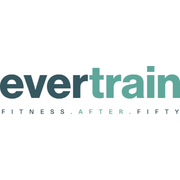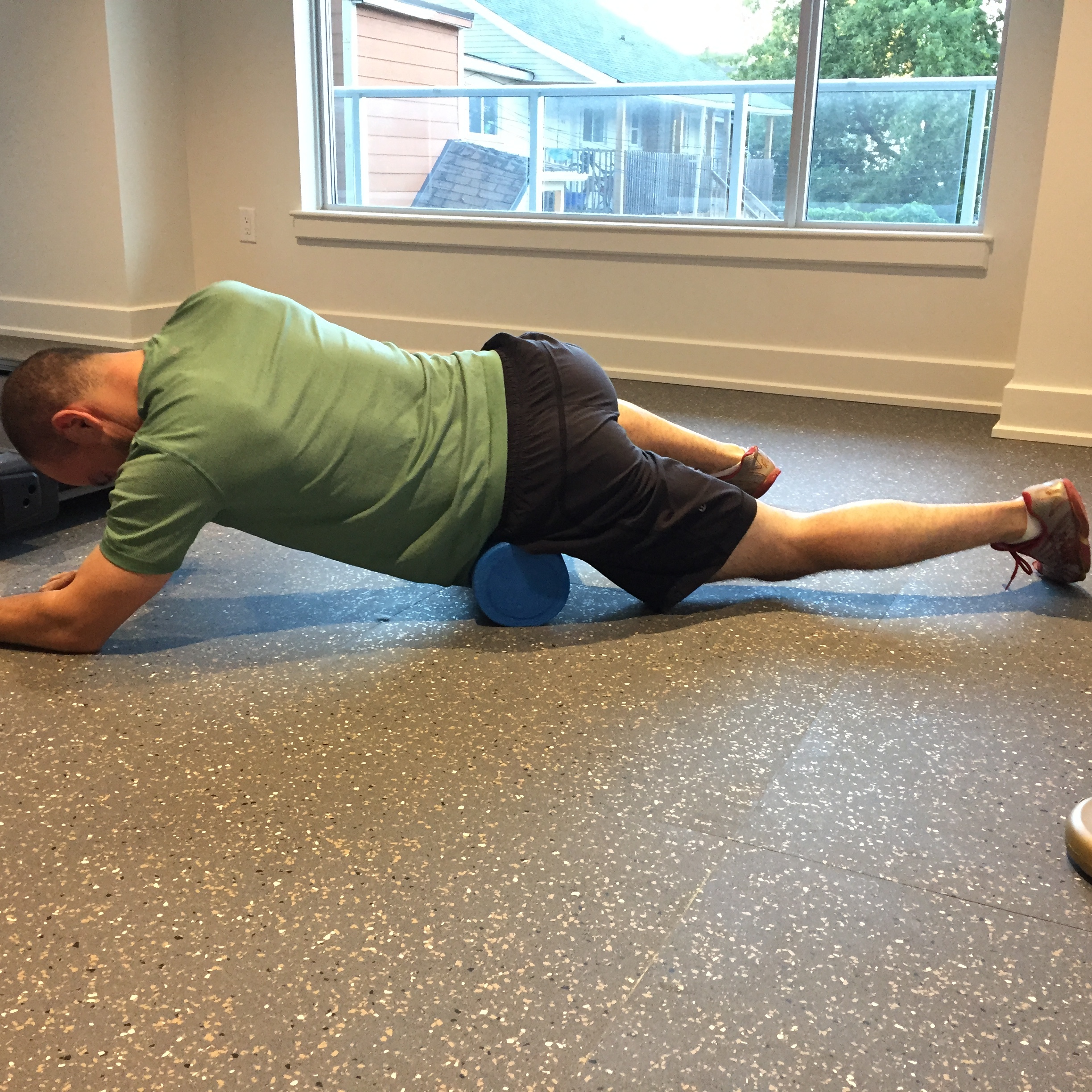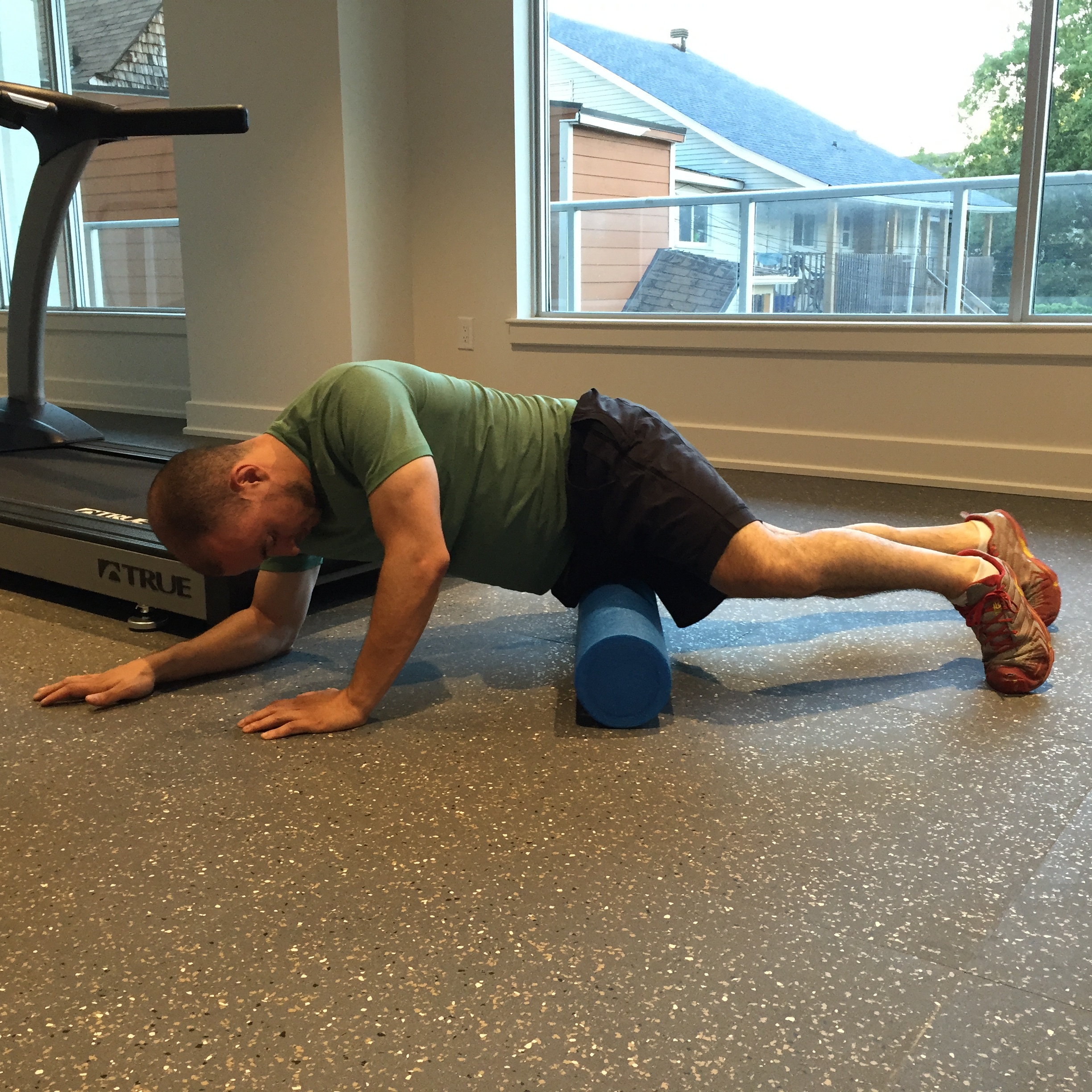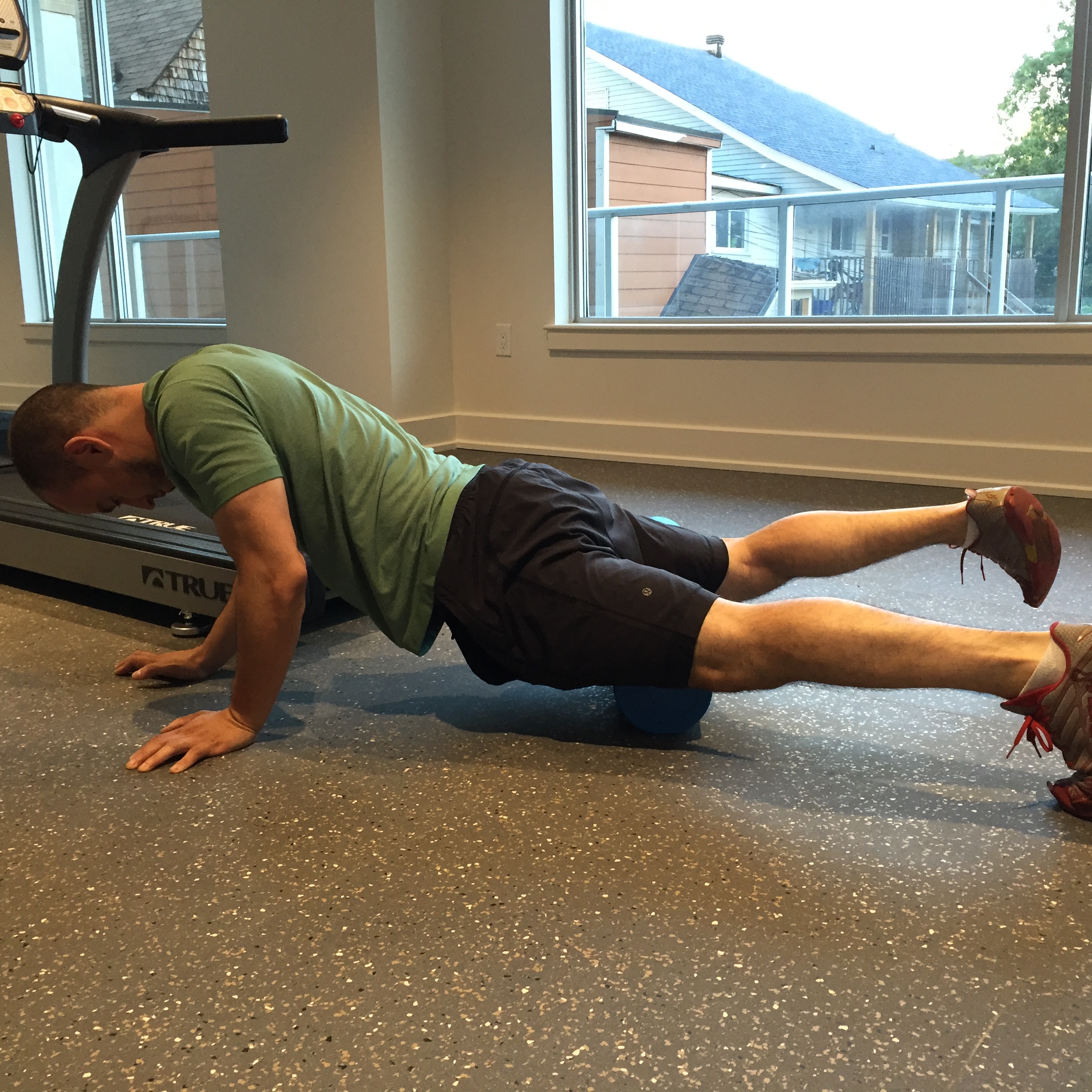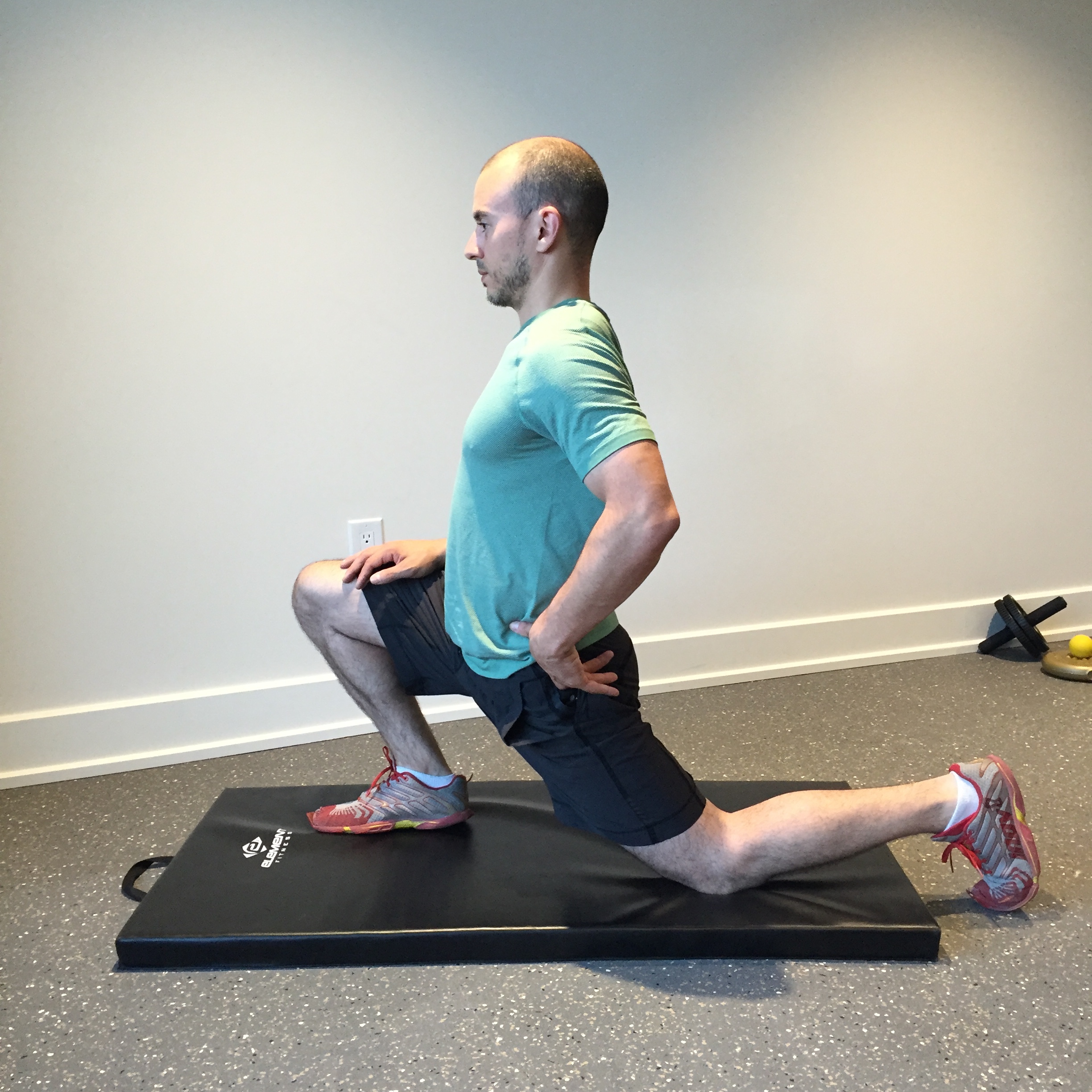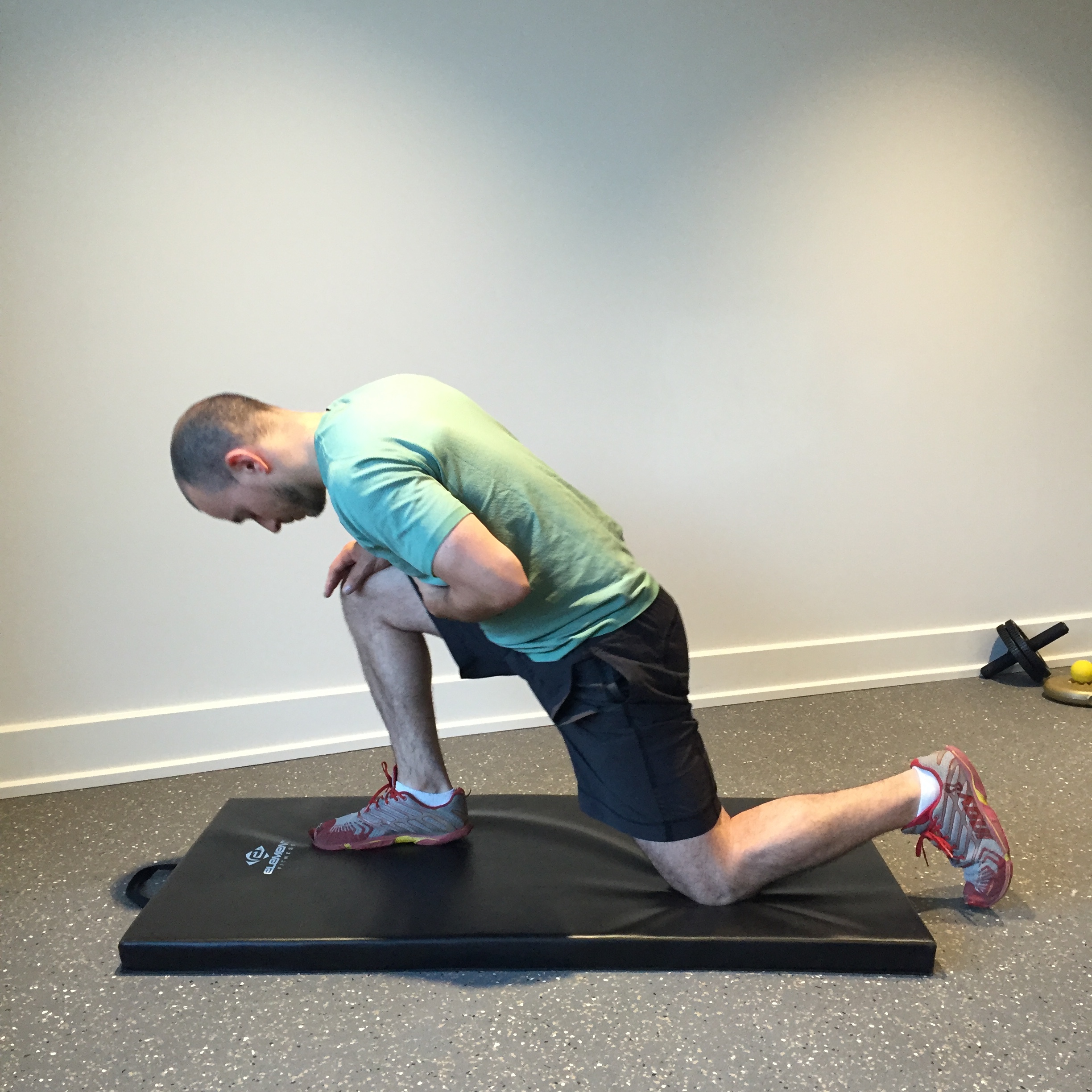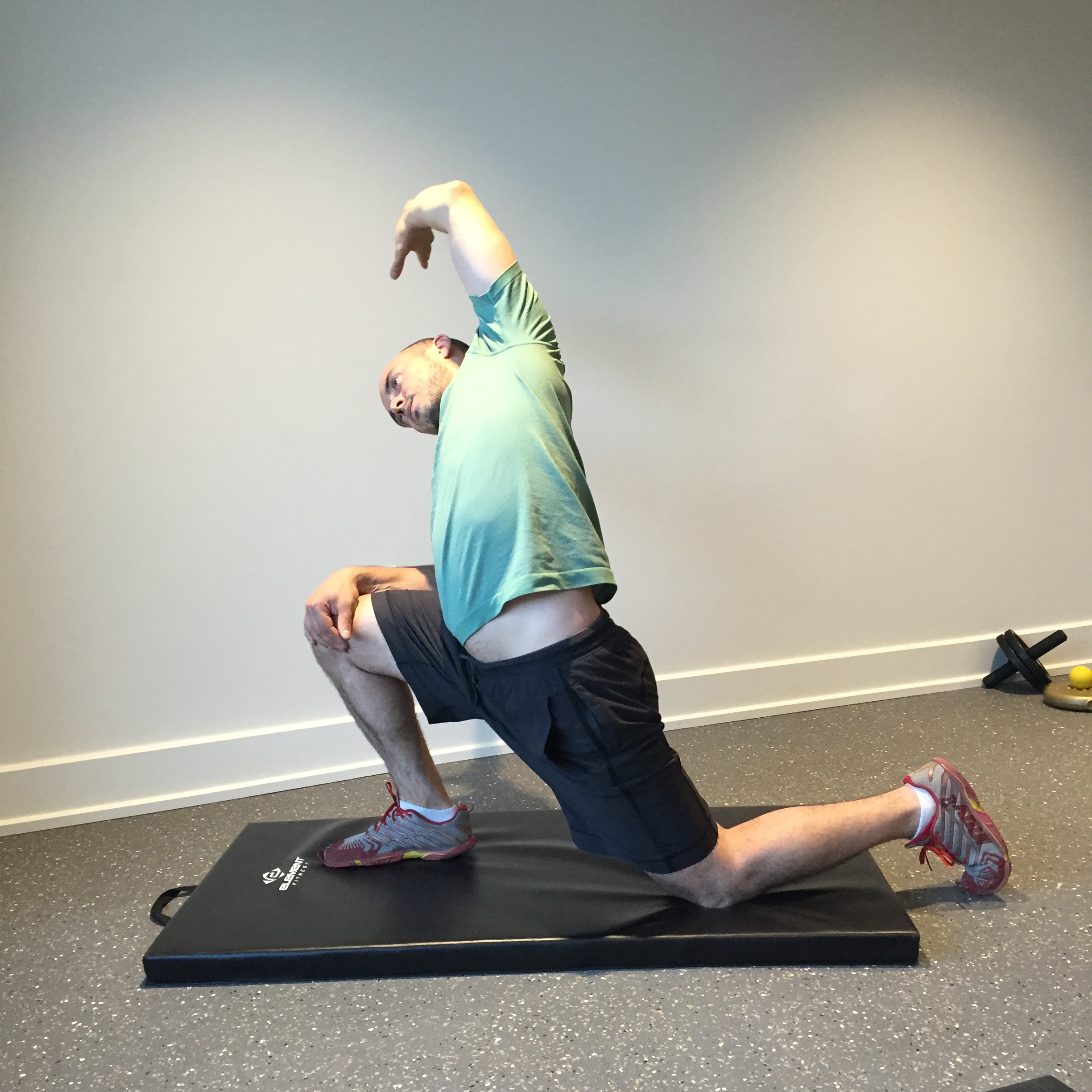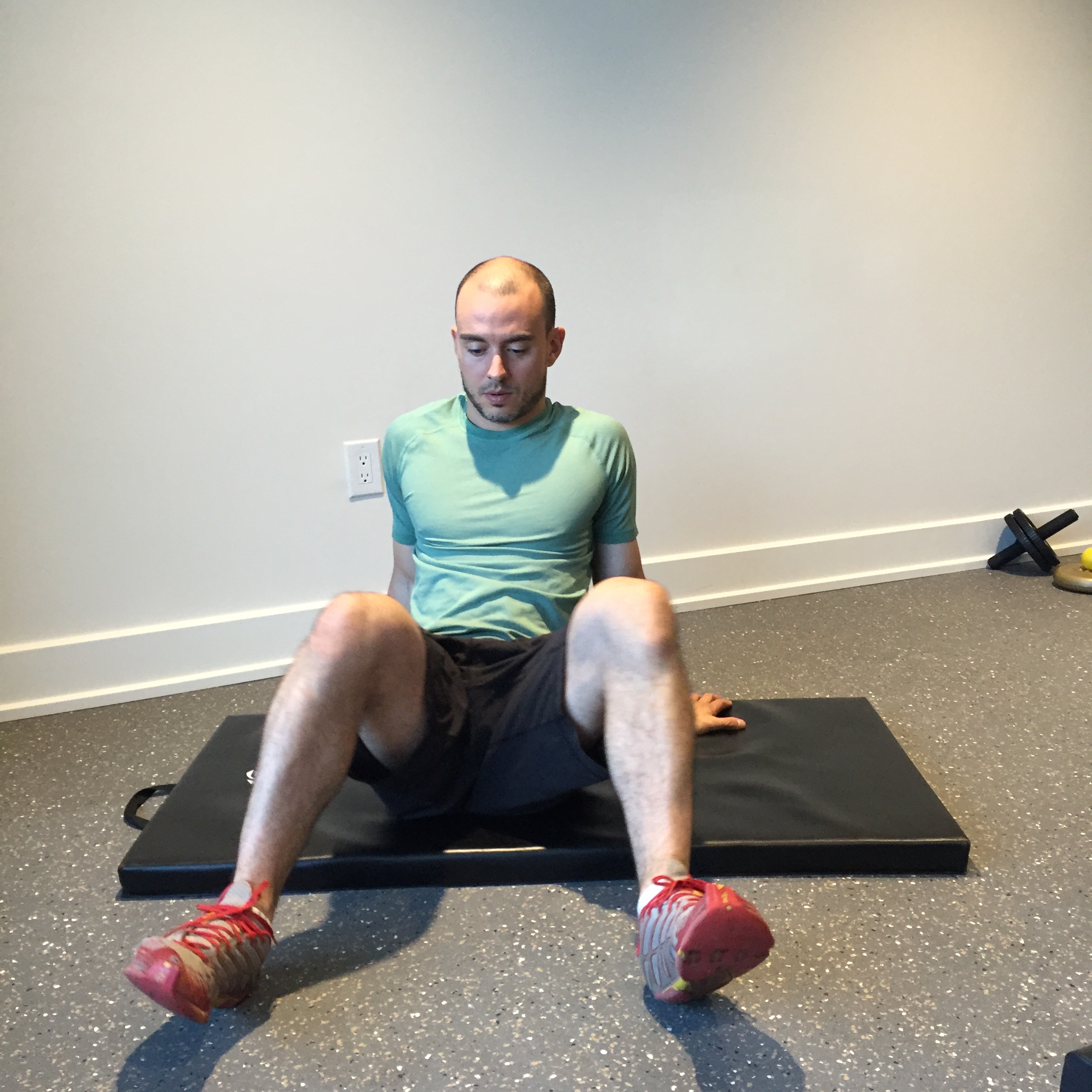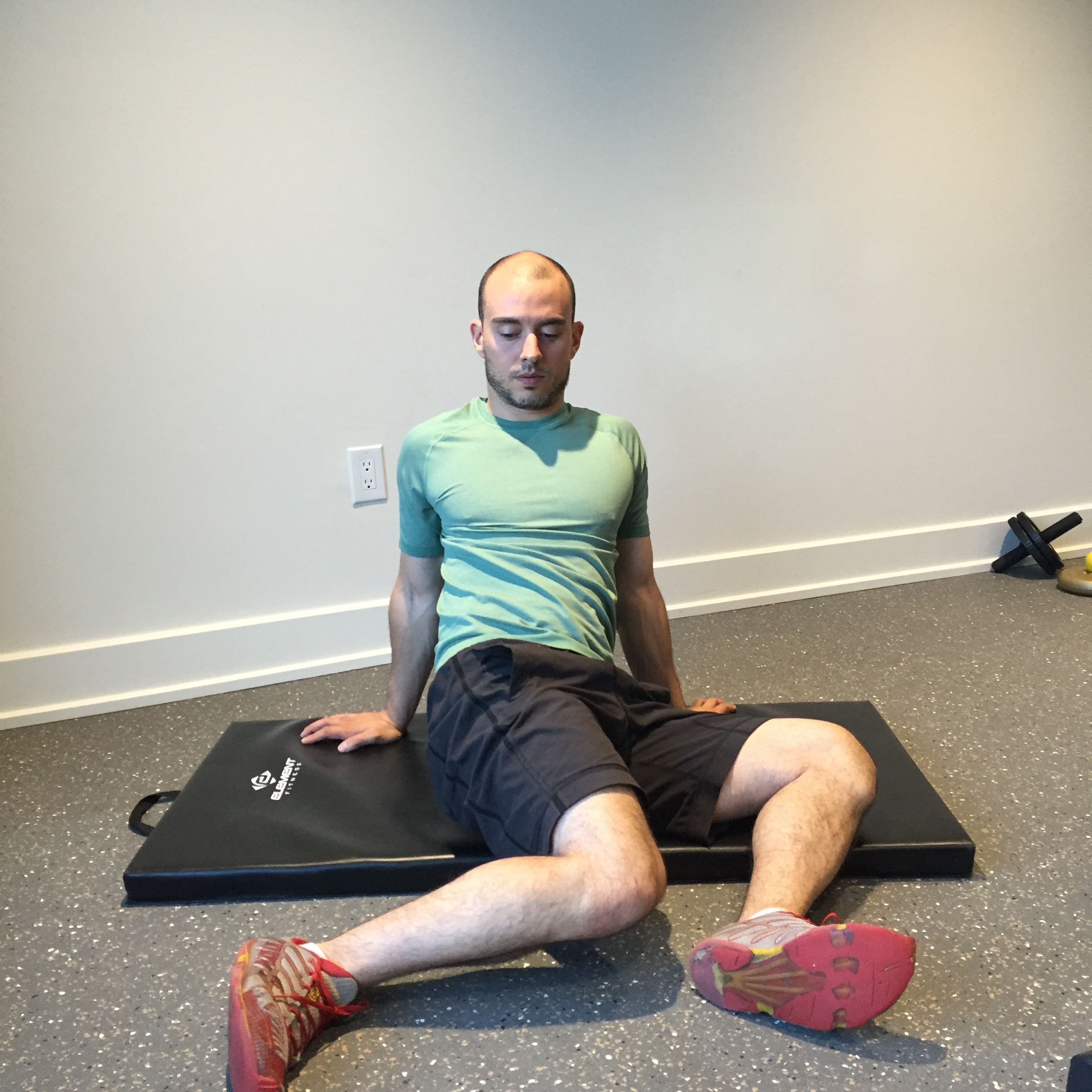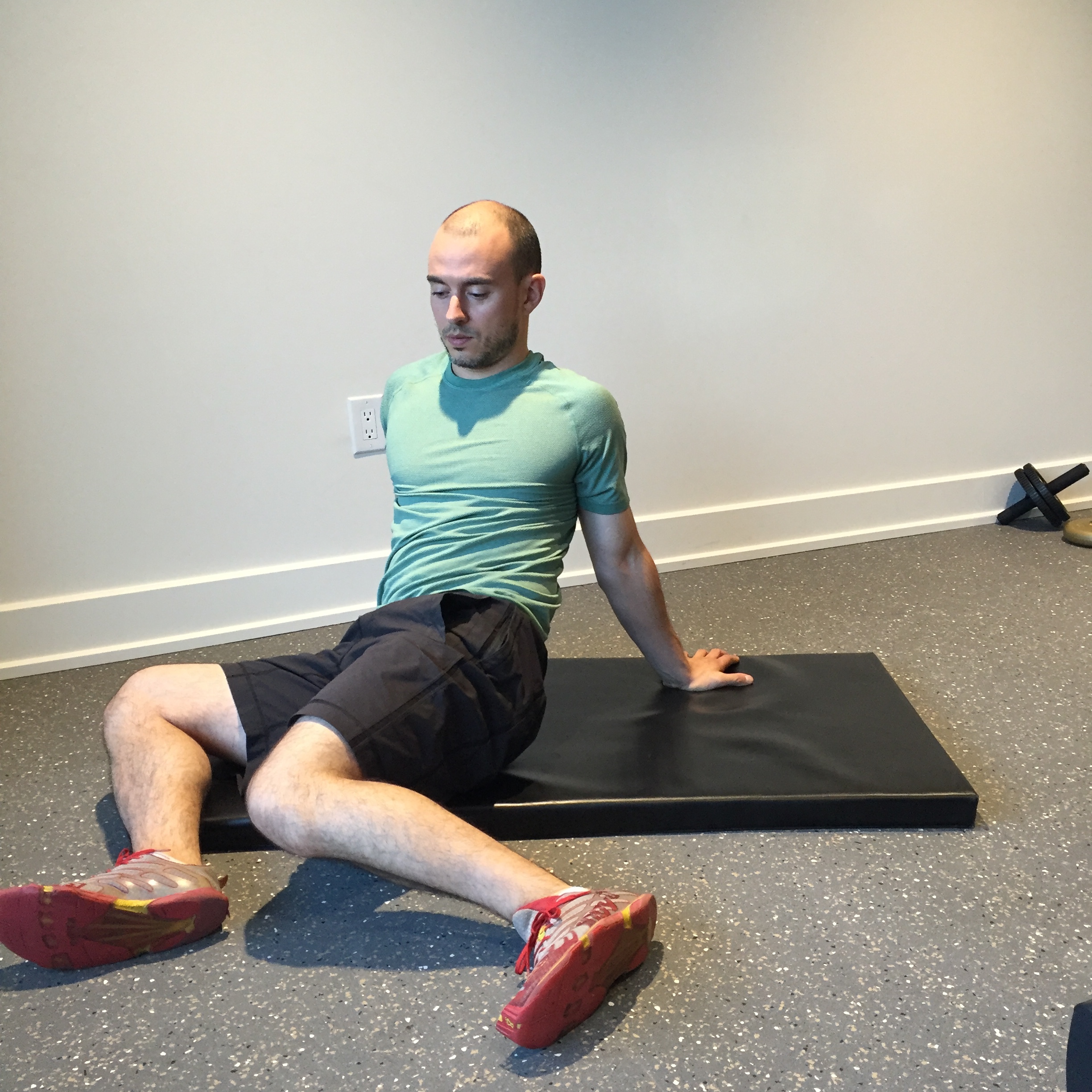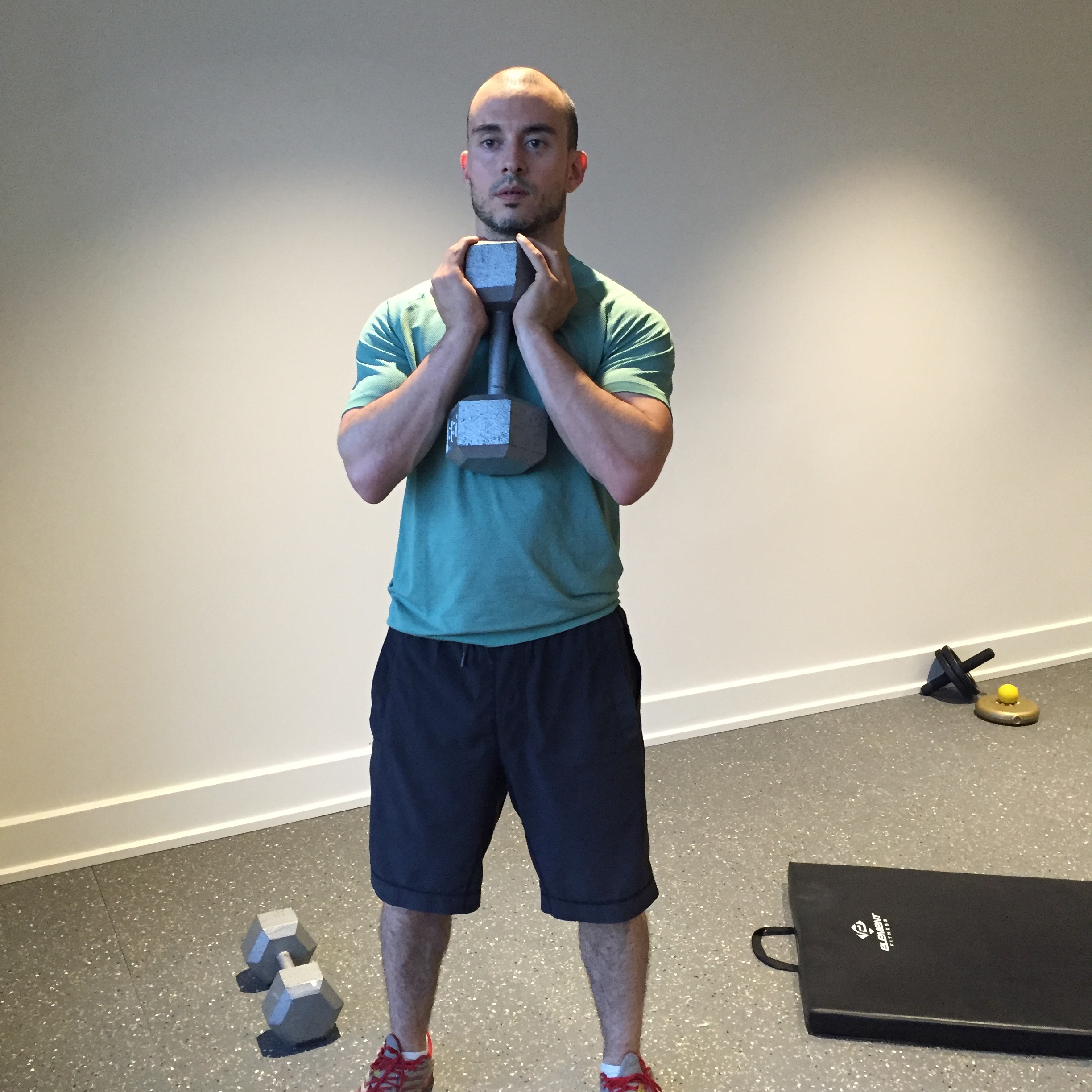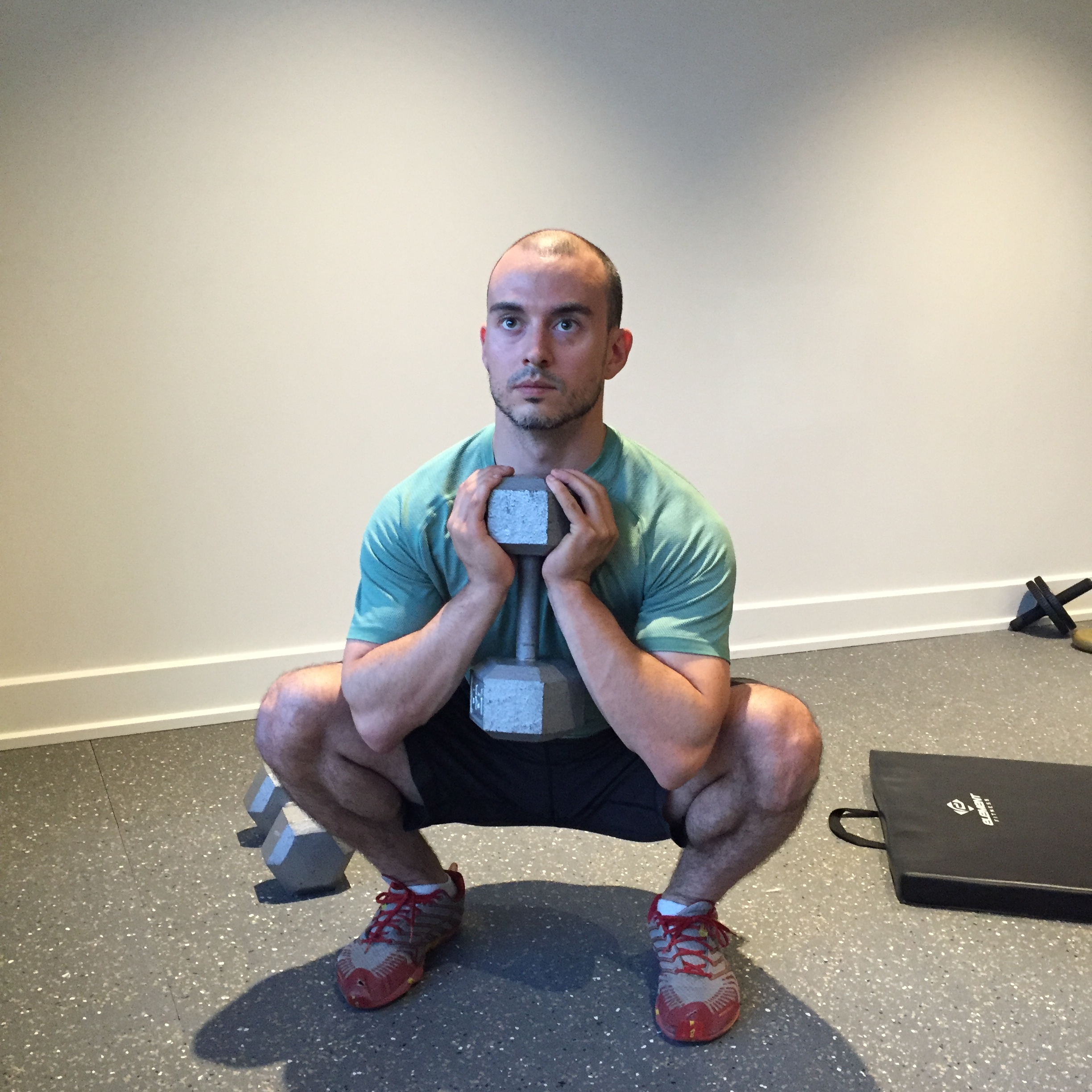Train Smarter.
Ever find yourself wondering what makes for a sound training program? One fitness website tells you that HIIT is all you need to reach your goals. Another tells you that lifting weights is what you're missing. Then in the back of your mind you're wondering whether or not you can even do these things without getting hurt.
Does this sound like you? If so, you are not alone.
When it comes to creating a workout plan that is right for you, there are so many variables to take into account. Where do we even start?
In this post we will break down the basics of how to create a plan on a daily basis. In part 2 we will explain programming on a weekly and monthly/yearly basis.
(Warning: This is a longer post. Feel free to skip to the parts you are most interested in. Otherwise, enjoy the read.)
First determine the goal of the plan.
Let's assume that the goal is quite generalized. You want to lean down (lose fat), prevent injury and gain strength.
Daily
How do we create a workout? This will depend on a few things such as;
- How much time you have for your workout
- How many times per week you will be performing a. resistance training & b. cardiovascular exercise?
- What equipment do I have access to?
- Where will I be training?
- and more
For the sake of this post, let's assume that you'll be dedicating 60 minutes 3x per week to your workout and the focus of the workout will be resistance training.
Note: Here are a few things to keep in mind. You will want to make sure that you target each muscle group a minimum of 2 times per week. This will determine how you group your resistance training workouts. At Evertrain, we generally like to split up our workouts into Total Body and Upper/Lower Body days.
4 key aspects to any resistance training workout
- Mobility/Warm-up/Movement Prep
- Resistance Training
- Metabolic Conditioning/Cardio
- Cooldown/Stretch
Here are 2 examples of how we like to break up the workouts for our clients.
Example A. emphasis on resistance training
- Mobility/Warm-up - 15 minutes
- Resistance Training - 35 minutes
- Metabolic Finisher - 5 minutes
- Stretch - 5 minutes
Example B. emphasis on stretching/mobility/improving movement
- Mobility/Warm-up - 30 minutes
- Resistance Training - 30 minutes
- Metabolic Finisher - 0 minutes
- Stretch - 0 minutes
Now that you get an idea of how you can efficiently breakdown each workout, let's look at each part of the workout.
1. Mobility/Warm-up
This is what we like to call the pre-workout. Conventional warm-ups are done by spending time on the treadmill/bike, etc. to get the heart pumping and circulation flowing through the body. As we learned a long time ago although this is good to do, this is a missed opportunity.
Why not spend the same amount of time warming-up while activating weak/in-active muscles, mobilizing our joints so that we can move/feel better and learning new movements?
We suggest performing a combination of myo-fascial release with lacrosse balls and foam rollers, stretching or lengthening tissues, activating weak areas (i.e. glutes, middle trapezius) and grooving new movement patterns.
Here is an example of what a "pre-workout" for a lower body day might look like;
- roll your calves and glutes with a lacrosse ball on the floor
- roll your quadriceps, adductors (inner thigh) and upper back with a foam roller
- hip flexor stretch wave sequence on both sides
- hip warm-up x 10
- cat camel x 6
- hip openers x 10
- glute bridge x 15
- body weight squat to target x 10
As you can see we have some myo-fascial release with the lacrosse ball and foam roller. We have a few stretches and activation exercises. Then we finish with grooving the pattern of the squat.
2. Resistance Training
There is so much to talk about on this area of fitness. For the sake of keeping it simple, we will discuss exercise selection/order.
The exercises and order you choose should be prioritized by;
- Your abilities/current level of fitness
- The biggest bang for your buck(time)
- Specific needs
There is one thing that goes above all others when choosing/following an exercise program*...
... don't get hurt!
When you hurt yourself everything goes on hold. You fall off track, you're in pain and you lose motivation to continue.
Tip: If you want to benefit from squatting more, first start off with a body weight squat. Then once you are ready, move towards a dumbbell variation of the squat. Over time move towards a barbell variation. In other words, start from the bottom and work your way up. It's always better to undershoot than to overshoot.
*All of our programs are designed to reduce and prevent injury all while moving you closer to your goals.
This is why you must allow your current ability level to dictate what you do. Assuming that you will continue to improve, you can gradually increase the degree of difficulty of the exercises you choose.
Tip: We like to pair exercises together to not only save time, but to increase the training effect. Pairing 2 or 3 exercises at a time is something we do regularly.
For a general fitness client here is how a total body day might look;
A1: Dumbbell Goblet Squat to Target - 3 sets x 10-15 reps - 45s rest
A2: Bench Supported Dumbbell Neutral Grip Row - 3 sets x 12 reps - 45s rest
B1: Single Leg Romanian Deadlift - 3 sets x 8 reps/side - 30s rest
B2: Dumbbell Floor Press - 3 sets x 12 reps - 30s rest
C1: Side Lying Dumbbell External Shoulder Rotation - 2 sets x 10 reps/side - no rest
C2: Stability Ball Dead Bug - 2 sets x 20 total reps - no rest
Now take a look at the exercise selection/order. You may or may not have noticed something. This is a very well rounded focus. Not only this but we prioritized the order of exercises based on biggest bang for our buck (squat, row) and specific needs (row, single leg deadlift).
In other words, it wouldn't make much sense to tire yourself out before performing your first set of squats. Save your energy for the exercises that will provide the biggest benefit.
“There is one thing that goes above all others when choosing/following an exercise program*...
... don’t get hurt!””
In the workout you have;
- a press (upper body anterior/chest)
- a pull ( upper body posterior/back)
- a squat (lower body anterior/quads)
- a single leg hinge (lower body posterior/glute-hamstring)
- a shoulder corrective exercise (rotator cuff)
- a core exercise (anti-movement/rectus abdominus)
These are all areas we want to focus on. Just remember to always maintain at least a 1:1 ratio of front to back muscles if not a 1:2 ratio. This will also help you to prevent injury.
There are endless ways you can set up your weight training. You just want to make sure that what you are doing is within your current level of ability, it addresses your specific needs and provides the biggest bang for your buck (time).
3. Metabolic Conditioning
Even on weight training days, (when appropriate) we like to dedicate a small amount of time towards metabolic conditioning. We like to dedicate 5-10 minutes at the end of the workout to get people moving closer to their fat-loss/performance goals.
This is where the finisher comes in. Aptly named, the finisher is your chance to transition from the methodical and controlled weight training portion of your workout to the part where you can test your limits and accelerate fat-loss/conditioning.
Here are some tips when choosing a finisher;
- ideally pick a movement that is not too complex as you will already be fatigued and want to push yourself. The more technical an exercise, the harder it is to perform while maintaining good form.
- Cardio equipment is great for this as it often doesn't require much technique.
- Choose an exercise that you already performed that day so that you don't have to spend too much mental energy on how to do it.
- Choose something that will allow you to push hard for a small period of time (i.e. a fast walk on the treadmill might not give the desired effect).
- Choose compound muscle groups for a bigger metabolic effect.
Here are some examples of finishers that we like;
Example A: C2 Rower
125m max effort - followed by 1 minute rest x 3-5 rounds
Example B: Tabata Stationary Bike
20s of maximum effort (high resistance) - followed by 10s of rest x 8 rounds
Example C: Push-Pull 21-15-9
Perform 21 Push-up variation then 21 TRX Body Rows, 15 Push-up variation then 15 TRX Body Rows, 9 Push-up variation then 9 TRX Body Rows. Go with little to no rest and finish as quickly as possible.
Note: Although a finisher is meant to push your limits, it is important to know your limits. Always keep safety as your number one priority when adding this extra challenge. Listen to your body.
4. Cooldown/stretch
The cool down and stretch at the end of the workout is likely the most simple part of your workout. We simply want to bring ourselves back down to our regular state.
We like to use this as an opportunity to reinforce some of the postural changes we are trying to make. In order to do this, we have our clients perform stretches and mobility exercises. Of course this is done more slowly and with slower breathing than what would have been done earlier on in the workout.
Example of a cooldown;
- roll your quadriceps, upper back on foam roller
- hip flexor stretch wave sequence on both sides
- hip warm-up x 10
- cat camel x 6
- straight leg adductor stretch
Conclusion
That concludes part one of The Evertrain Quick-Guide to Designing Your Own Training Program. Now you know some of the key components of a sound workout. Stay tuned for part 2 to find out how to structure your workouts over the week, month and year.
If you want to skip this part and get help designing a program that fits you and your goals, ask us about our LeanAfter50-Online program. Simply give us a call at 613-295-8080 or visit our contact us page for more information.
Yours in health,
The Evertrain Team
Learn more with our other Quick-Guide posts
-
September 2023
- Sep 26, 2023 Struggling to be consistent with exercise? When in doubt do this. Sep 26, 2023
- Sep 21, 2023 UPDATED POSTING: We're Looking for the Next All-Star Coach to Grow With Us Sep 21, 2023
-
June 2023
- Jun 10, 2023 UPDATE: We're Hiring Our Next All-Star Coach Jun 10, 2023
-
November 2022
- Nov 26, 2022 NEWS: Evertrain is Hiring Nov 26, 2022
-
June 2022
- Jun 1, 2022 6 Must-Do Stretches to Improve Flexibility for People over 50 Jun 1, 2022
-
May 2022
- May 4, 2022 Fitness After 50 Success Tip: Build Your At-Home Gym May 4, 2022
-
April 2022
- Apr 27, 2022 The Evertrain Treat Food Reduction Tool Apr 27, 2022
-
February 2022
- Feb 23, 2022 Client Success Story - Murray A. Feb 23, 2022
- Feb 13, 2022 Best Practice #4 - Follow a Progressive Program Feb 13, 2022
- Feb 5, 2022 Best Practice #3 - Train the Big 3, for long lasting results. Feb 5, 2022
-
January 2022
- Jan 31, 2022 Best Practice #2 - Mobilize (to remain injury free) Jan 31, 2022
- Jan 16, 2022 Best Practice #1 - Train Smart (Avoid Injury) 🧠💪 Jan 16, 2022
- Jan 9, 2022 Client Success Story - Derek. P Jan 9, 2022
-
December 2021
- Dec 27, 2021 The 4 Best Practices to Achieving your Fitness Goals Dec 27, 2021
- Dec 27, 2021 Overcoming the #1 Obstacle 👊👊👊 Dec 27, 2021
-
November 2021
- Nov 21, 2021 Meal Planning Simplified 👩🍳👨🍳 Nov 21, 2021
- Nov 14, 2021 Fitness After 50 Client Showcase - Jonathan B. Nov 14, 2021
- Nov 6, 2021 Confused On How To Get Out Of Pain? Learn The Approach Used By The Pros. Nov 6, 2021
-
October 2021
- Oct 25, 2021 Fitness After 50 - Personal Training Success Story - Priscilla C. Oct 25, 2021
- Oct 16, 2021 Get out of pain by improving posture 🚶💪 Oct 16, 2021
- Oct 16, 2021 3 Ways Exercise Improves Mental Health and Well-being 🚴♀️🧠🙂 Oct 16, 2021
- Oct 3, 2021 3 Easy Ways to Lose Weight After 50 📉 👍 Oct 3, 2021
-
June 2021
- Jun 22, 2021 6 Park Band Stretches That You Will Love Jun 22, 2021
-
May 2021
- May 18, 2021 5 Reasons Why Flexibility Is So Important For People Over 50. 👍 May 18, 2021
-
April 2021
- Apr 17, 2021 Improve Your Sleep With These Simple Tips 😴 😀 Apr 17, 2021
-
March 2021
- Mar 11, 2021 Client Success Showcase - Elaine B. "Member of the Year 2019" Mar 11, 2021
- February 2021
-
January 2021
- Jan 30, 2021 Improve Flexibility and Feel Your Best - Our Top 6 Mobility Tools Jan 30, 2021
-
December 2020
- Dec 20, 2020 Client Success Showcase - Joy N. Dec 20, 2020
-
June 2019
- Jun 29, 2019 3 Fit People Over 50 Go On An Epic Cross Canada Bike Ride - Leg #2 Jun 29, 2019
- Jun 1, 2019 Get Back on The Fitness Wagon This Summer - Evertrain 30-Day Kickstart Program Jun 1, 2019
-
May 2019
- May 24, 2019 Client Success Showcase - Natalie B. May 24, 2019
- May 12, 2019 Client Success Showcase - Barb C. May 12, 2019
- May 6, 2019 Client Success Showcase - Donna S. May 6, 2019
-
April 2019
- Apr 29, 2019 Client Success Showcase - Jeff H. Apr 29, 2019
-
January 2019
- Jan 12, 2019 Evertrain 2018 Year in Review Jan 12, 2019
-
November 2018
- Nov 17, 2018 "BRING-A-FRIEND" GOLDEN TICKET EVENT Nov 17, 2018
-
October 2018
- Oct 8, 2018 Fall Back into Fitness - Evertrain 30-Day Kickstart Program Oct 8, 2018
- Oct 3, 2018 Why We Exist Oct 3, 2018
- Oct 3, 2018 Evertrain's Grand Opening Oct 3, 2018
-
September 2018
- Sep 22, 2018 A New Fitness Studio for People Over 50 Coming to Ottawa: Come and Celebrate Evertrain's Grand Opening! Sep 22, 2018
-
July 2018
- Jul 11, 2018 Are You Ready To Get Back On the Fitness Wagon!? Jul 11, 2018
-
March 2018
- Mar 29, 2018 Always fit but constantly injured. Now 6 months later, no aches or pains and feeling stronger than ever Mar 29, 2018
- Mar 28, 2018 From super fit, to couch potato, to now pumped about his future Mar 28, 2018
- Mar 27, 2018 After two hip replacements, she increased her confidence and is no longer afraid of getting hurt Mar 27, 2018
- Mar 26, 2018 3 Exercises You Should Be Doing After Pregnancy (and 1 You Should Avoid) Mar 26, 2018
- Mar 26, 2018 From a stressful lifestyle and almost burning out, to putting longterm health first. Mar 26, 2018
- Mar 25, 2018 "I have renewed confidence to tackle new and exciting challenges!" Mar 25, 2018
- Mar 19, 2018 9 Health and Fitness Hacks for Busy People - Ottawa Mar 19, 2018
- Mar 5, 2018 8 Benefits of Prenatal Exercise Mar 5, 2018
-
February 2018
- Feb 26, 2018 The Evertrain Quick-Guide to Better Squats (and better results!) Feb 26, 2018
- Feb 19, 2018 The Evertrain Quick-Guide to Designing Your Own Fitness Training Program pt. 1 - Ottawa Feb 19, 2018
- Feb 12, 2018 3 Things to know about postnatal fitness Feb 12, 2018
- Feb 5, 2018 5 "Fit After 50" Fitness Tips - Ottawa Feb 5, 2018
-
January 2018
- Jan 29, 2018 5 "Fit After 50" Lifestyle Tips - Ottawa Jan 29, 2018
- Jan 22, 2018 5 "Fit After 50" Nutrition Tips - Ottawa Jan 22, 2018
- Jan 7, 2018 5 Reasons Why You'll Want to Join Our New Year 30-Day Kick-Start Program. Ottawa Personal Training, Injury Prevention, Fitness & Weight-Loss Jan 7, 2018
-
November 2017
- Nov 30, 2017 How to Survive the Holidays This Season - Ottawa Fitness and Nutrition for the Holidays Nov 30, 2017
-
September 2017
- Sep 28, 2017 3 Ways to Reduce the "Middle-Age Bulge" - Ottawa, Weight Loss, Nutrition Tips Sep 28, 2017
- August 2017
- May 2017
-
April 2017
- Apr 3, 2017 Reach Your Goals Now and Stop "Falling Off the Wagon". The First Step and More...Ottawa Apr 3, 2017
- February 2017
-
January 2017
- Jan 29, 2017 Getting Set Up: At-Home Fitness Jan 29, 2017
- Jan 15, 2017 The Evertrain Quick-Guide to Goal Setting for Fitness and Weight Loss - Ottawa Jan 15, 2017
-
September 2016
- Sep 6, 2016 5 Keys to Success With Your Fitness This Fall - Ottawa Fitness Sep 6, 2016
-
May 2016
- May 16, 2016 Evertrain Case Study - Mary McDowell Personal Training May 16, 2016
- May 16, 2016 Welcome to The Evertrain Blog May 16, 2016
